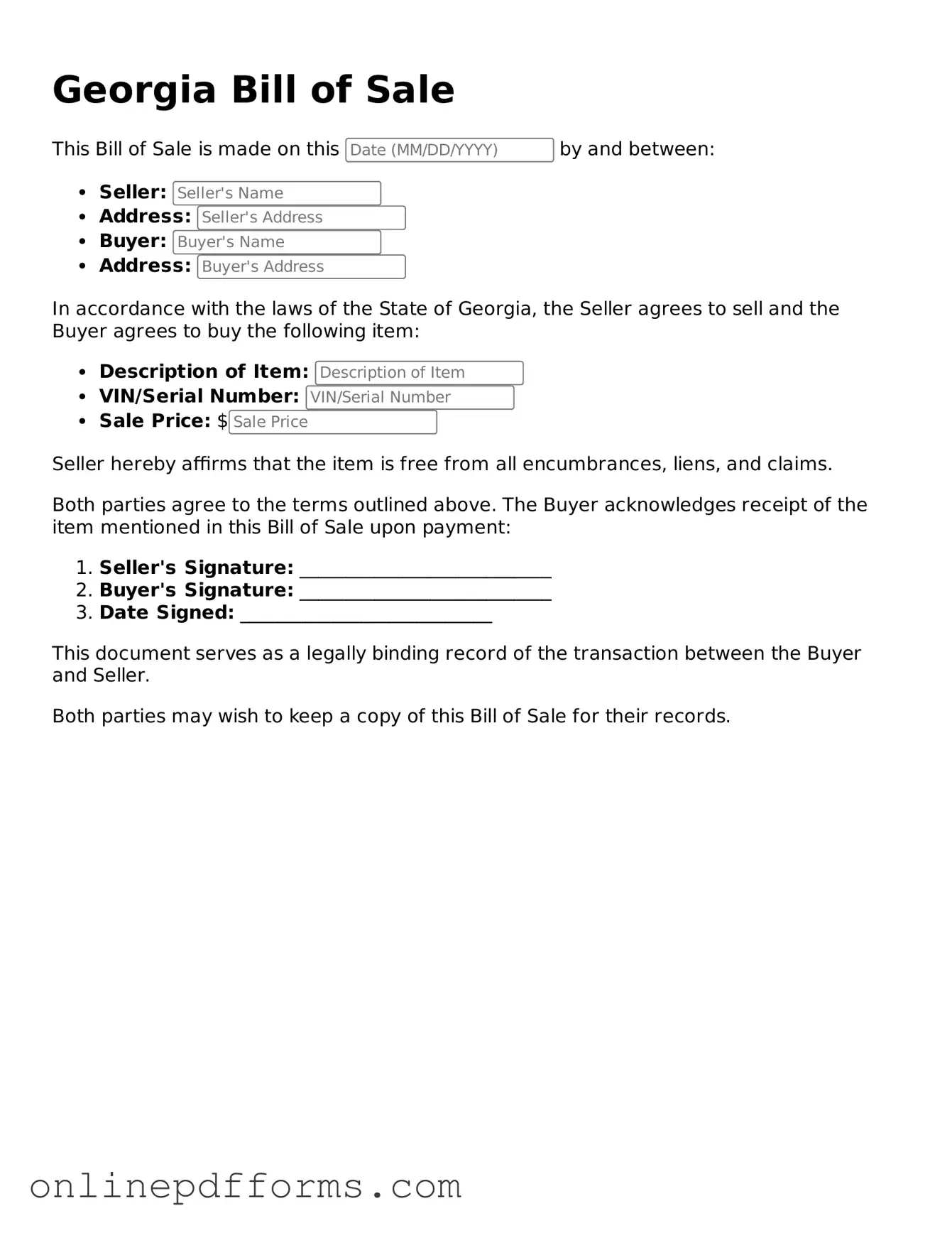The Georgia Bill of Sale form is similar to the Vehicle Bill of Sale, which is specifically used for the transfer of ownership of a motor vehicle. This document includes details such as the vehicle's make, model, year, and Vehicle Identification Number (VIN). Like the general Bill of Sale, it serves as proof of the transaction and protects both the buyer and seller by documenting the agreed-upon terms of sale. This specialized form often requires additional information about the vehicle’s condition and any warranties, ensuring clarity in the transfer process.
Another document that shares similarities with the Georgia Bill of Sale is the Personal Property Bill of Sale. This form is used to transfer ownership of items that are not real estate, such as furniture, electronics, or collectibles. It includes descriptions of the items being sold, the purchase price, and the signatures of both parties. Just like the general Bill of Sale, it provides a legal record of the transaction, helping to prevent disputes over ownership in the future.
The Equipment Bill of Sale is also akin to the Georgia Bill of Sale, particularly for transactions involving heavy machinery or specialized tools. This document outlines the specifics of the equipment, including serial numbers and condition. It serves to protect both parties by clearly defining what is being sold, the sale price, and any terms regarding warranties or liabilities. The Equipment Bill of Sale ensures that both the buyer and seller have a clear understanding of the transaction.
In addition, the Firearm Bill of Sale is a document similar to the Georgia Bill of Sale, used specifically for the sale of firearms. This form includes details about the firearm, such as the make, model, and serial number, along with the buyer and seller's information. It is essential for compliance with state and federal laws regarding firearm transactions, providing a legal record that can be referenced if needed. Like other bills of sale, it safeguards the interests of both parties involved.
The Boat Bill of Sale is another related document, specifically for the transfer of ownership of watercraft. It includes information about the boat, such as its registration number, make, and model. This form acts as proof of ownership and is often required for registration purposes. Just as with the general Bill of Sale, it helps clarify the terms of the sale and protects both the buyer and seller from potential disputes.
For real estate transactions, the Real Estate Bill of Sale is similar in function to the Georgia Bill of Sale. This document is used to transfer personal property that is included in a real estate sale, such as appliances or fixtures. It lists the items being transferred and their value, ensuring that both parties are aware of what is included in the sale. This document is crucial for establishing clear ownership and preventing misunderstandings during the closing process.
The Lease Agreement can also be compared to the Georgia Bill of Sale, as it outlines the terms under which property is rented or leased. While it does not transfer ownership, it serves as a legal document that protects the rights of both the landlord and tenant. It includes details such as the duration of the lease, rental amount, and any conditions or rules governing the property. This agreement ensures that both parties understand their responsibilities and rights during the lease term.
Lastly, the Gift Bill of Sale is similar in that it documents the transfer of ownership without a monetary exchange. This form is often used when one party gifts an item to another. It includes details about the item and the parties involved, ensuring that the transfer is recognized legally. While it may not involve a sale price, it still provides a record of the transaction, which can be helpful for future reference or disputes.
